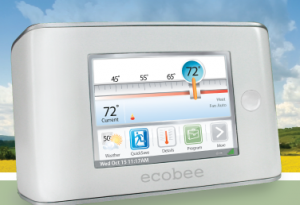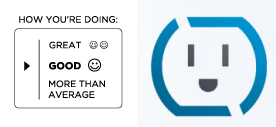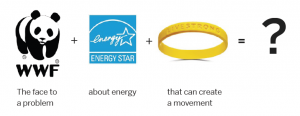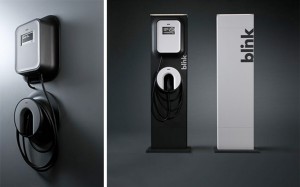 Makers of home energy efficiency products like dashboards and smart thermostats have a myriad of issues to contend with — getting their products into more homes, making sure the technology works, raising money, crafting long-term business plans, to name a few.
Makers of home energy efficiency products like dashboards and smart thermostats have a myriad of issues to contend with — getting their products into more homes, making sure the technology works, raising money, crafting long-term business plans, to name a few.
But the biggest hurdle may be a deceptively simple one: Getting people to use the darn things.
As energy-efficient product makers vie for market dominance, companies are looking to better engage more consumers, most of whom aren’t used to actively managing their energy use. The industry itself is seeing shifts to more sophisticated and innovative approaches, whether that’s Microsoft Hohm reducing the number of questions in the set-up phase, or new players like the GE-backed Consert letting users set a target amount they want to pay for their energy bill and designing a program to hit that goal.
All of these changes are much-needed. According to Stuart Lombard, CEO of smart thermostat maker Ecobee, only about 22 percent of smart thermostat owners bother to program their thermostats. The consumer engagement problem is one that reaches far, from smart meters to in-home dashboards — and it’s a topic VentureBeat will be discussing our GreenBeat conference in a consumer efficiency panel Nov. 4 at Stanford University with Google’s green energy czar Bill Weihl, as well as executives Saul Zambrano of PG&E and Scott Hublou of EcoFactor.
“One factor is clearly usability. A lot of products were historically not consumer friendly,” Lombard said. The biggest reason consumers don’t use their smart thermostats is that “people don’t know how they work,” he added.
“It really is a problem space which has been for so long left untouched and left undesigned that it’s extraordinary how many opportunities there are,” says David Merkoski, executive creative director at Frog Design. The company designs energy-efficiency products for clients like car charging station-maker Ecotality and utilities like Germany’s Yello Strom.
 Companies are tackling the challenge with a mix of behavioral science and appealing design. Ecobee, for example, says it gets 80 percent of its tens of thousands of customers to engage with their smart thermostats (pictured) — four times the industry average — because the products are designed to be quick and easy to set up. Just spend a few minutes answering questions, and you’re done. And home energy company Tendril recently acquired GroundedPower — an energy efficiency technology company that, interestingly, was founded by behavioral scientists who previously pioneered a top quit-smoking program.
Companies are tackling the challenge with a mix of behavioral science and appealing design. Ecobee, for example, says it gets 80 percent of its tens of thousands of customers to engage with their smart thermostats (pictured) — four times the industry average — because the products are designed to be quick and easy to set up. Just spend a few minutes answering questions, and you’re done. And home energy company Tendril recently acquired GroundedPower — an energy efficiency technology company that, interestingly, was founded by behavioral scientists who previously pioneered a top quit-smoking program.
“It’s from the addiction to nictoine to the addiction to energy,” said Tendril CEO Adrian Tuck in an interview last month with VentureBeat. GroundedPower is also mostly hands-off, offering a two-question set up process, then gradually introducing suggestions over time. “Consumers really just want to be told now and then, ‘Here’s some things you can do,'” he said.
So what’s the right approach? There are no silver bullets yet, but here are some of the key trends and approaches emerging today:
Don’t bombard users with data
Most energy management systems out there offer visual data displays of energy use — charts, graphs, the like. Businesses likely want more of that data — especially when a software maker like Hara can help them maximize big savings using that data — but consumers want less of it.
“The smart grid industry has been laboring under the idea that consumers have been kept in the dark about their consumption, which is true. What’s not true is immediate response is to bombard consumers with data,” Tendril CEO Adrian Tuck says.
“We are drowning now in this awareness tech,” echoes Merkoski of Frog Design. “The technology alone isn’t going to be successful. Lots of products have charts and services that read your consumption.”
Consider the gaming experience instead
 Charts and graphs were “round one,” Merkoski says — now it’s time to design displays that consumers can see themselves in, designs that trigger consumers to act. Part of that challenge is making energy saving more like a fun game and less of a chore (that is, if you’re not one of those people who loves geeking out over stats and bar charts).
Charts and graphs were “round one,” Merkoski says — now it’s time to design displays that consumers can see themselves in, designs that trigger consumers to act. Part of that challenge is making energy saving more like a fun game and less of a chore (that is, if you’re not one of those people who loves geeking out over stats and bar charts).
True, no one’s figured out how to make saving energy a game people want to play. Still, the social and gaming elements of Mafia Wars and Farmville are arguably seeping into approaches like that of industry darling OPower. OPower prints bills that show consumers their energy usage compared to their neighbors’ and that of their region — with a smiley face for those who are beating the area average — an approach that has yielded great energy savings gains.
The dashboard of soon-t0-be-released hybrid Chevrolet Volt also has a slight game-like quality to it — bright, shiny graphics that reflect gas and battery mileage. In a way, it creates a “game” of getting the most out of the Volt’s battery before the car switches into gas-powered mode.
Convenience and comfort are key (duh)
Smart thermostats traditionally haven’t been very easy to use — or have turned consumers off because they didn’t adjust for fluctuations in season or time, making for uncomfortable homes. Ecobee, for example, is quickly programmable and pulls in factors like the weather to precool or preheat your home before you return from work. It also learns your schedule, which you can set or reset with a quick drag-and-drop program.
Home energy dashboard maker EnergyHub, has earned raves for a similarly easy-to-use approach. “You want really good default settings,” Seth Frader-Thompson, CEO of EnergyHub, told Greentech Media.
Icons are important
 The EnergyStar logo is a great example of how valuable icons are — one look and you know the fridge you’re buying is energy-efficient. The Live Strong wristband is probably one of the strongest examples of an icon that conveys an entire movement — and it’s something Frog Design is trying to emulate in creating a logo that will brand the energy-efficient “movement.”
The EnergyStar logo is a great example of how valuable icons are — one look and you know the fridge you’re buying is energy-efficient. The Live Strong wristband is probably one of the strongest examples of an icon that conveys an entire movement — and it’s something Frog Design is trying to emulate in creating a logo that will brand the energy-efficient “movement.”
The Chevy Volt makes use of a leaf icon — both in a physical button on the console and in a swirling, color-changing bubble on the dashboard that shows when the car isn’t being driven efficiently (accelerating too fast or braking too hard).
Untangle the set-up process
When Microsoft Hohm first launched, there were “a ton” of questions involved with setting up an account, said spokeswoman Kate Keefe Sullivan. But after hearing feedback, the company revamped it to quickly show potential savings — and saw a “hike” in users after the improvements. Microsoft also created an energy efficiency score on a scale of 1-100 — users can compare their scores against their neighbors. There’s also a questionnaire that will help users get better results, if they decide they want to spend the time answering extra questions. “It’s up to them how much time they’d like to invest,” Sullivan said.
GroundedPower also uses a similar easy set-up approach — it asks whether you’re interested in energy efficiency because you want to save money, or because you care about the environment — then, over time, proffers recommendations based on what it’s learned about you and your energy habits.
Mobile is the way to go: The light switch effect
 Most people turn off the lights in their house when leaving but don’t adjust their thermostat, because it’s not as obvious or easy to do so, even though A/C systems suck up way more energy than lights. Companies are in search of the “light switch effect,” or an application that’s as simple as flipping a light switch (but applies to any number of energy-saving applications).
Most people turn off the lights in their house when leaving but don’t adjust their thermostat, because it’s not as obvious or easy to do so, even though A/C systems suck up way more energy than lights. Companies are in search of the “light switch effect,” or an application that’s as simple as flipping a light switch (but applies to any number of energy-saving applications).
Mobile may well be the answer. People already have smartphones, and apps are already being hotly used by the emerging hybrid and electric car market. Just as you can check your gas tank on your phone, you can also control the A/C in your house from afar. Companies like Visible Energy (pictured) specialize in visualizing energy design, offering easy-on-the-eyes apps for the iPhone and iPad. Home energy management companies like Control4, Ecobee and EnergyHub offer apps. Ecobee’s Lombard says mobile apps are currently the company’s most-requested product.
Use analogies to help consumers relate to new technology
 In the design for the sleek-and-slim Ecotality electric car charger, designers intentionally created a “hose” because it’s something consumers are used to when pumping gas or unfurling a garden hose to water their lawns.
In the design for the sleek-and-slim Ecotality electric car charger, designers intentionally created a “hose” because it’s something consumers are used to when pumping gas or unfurling a garden hose to water their lawns.
“The reason we did that was because consumers are still trying to figure out what is this EV [electric vehicle] charging thing. Can’t I just buy it and go? Isn’t it like a Prius? We wanted to make it seem more familiar,” Merkoski said.
In the same way, electric car makers are by and large placing and designing the charge point similarly to a traditional car’s fuel tank flap — the location and size of the charging “tank” are roughly the same.
Convey dollar value to the user
If you’ve got to go through a confusing maze of questions and settings just to program your thermostat, that’s already a turn off. But if you’re only going to save $5 on your energy bill — or think you won’t save much — then all the more reason to ignore it altogether.
Companies like Consert are trying to maximize consumer interest in saving money. One option it offers customers is the ability to enter a target energy bill amount and have a program tailored to reach that goal. Ecobee, too, is trying to show how much money its products save but says it’s hard to do simply because every home and energy system is different.
Microsoft Hohm now offers a website where users can enter their address and automatically get an estimate of how much green they can save by going green.
Set it and forget it
Consert’s Chief Development Officer Roy Moore said the company observed how customers interacted with its systems and found convenience was key.
“The most important feature for consumers was their ability to set up an energy profile, a set it and forget it type of approach,” Moore said. “In short, the system was designed to meet the needs of the ‘I want to save money but don’t bother me’ crowd and the needs of the techies who want to explore their energy use in detail.”
[Top image via Flickr/victoriapeckham; homepage photo via Boiler Design]
 Are you a green executive or entrepreneur? If so, sign up now for GreenBeat 2010 — the year’s seminal conference on the smart grid — November 3-4 at Stanford University. World leaders in smart grid initiatives will debate how the new “Super Grid” is creating huge opportunities in cars, energy storage, and renewables. GreenBeat 2010 is hosted by VentureBeat and SSE Labs of Stanford University. Go here for full conference details.
Are you a green executive or entrepreneur? If so, sign up now for GreenBeat 2010 — the year’s seminal conference on the smart grid — November 3-4 at Stanford University. World leaders in smart grid initiatives will debate how the new “Super Grid” is creating huge opportunities in cars, energy storage, and renewables. GreenBeat 2010 is hosted by VentureBeat and SSE Labs of Stanford University. Go here for full conference details.
VentureBeat's mission is to be a digital town square for technical decision-makers to gain knowledge about transformative enterprise technology and transact. Learn More
